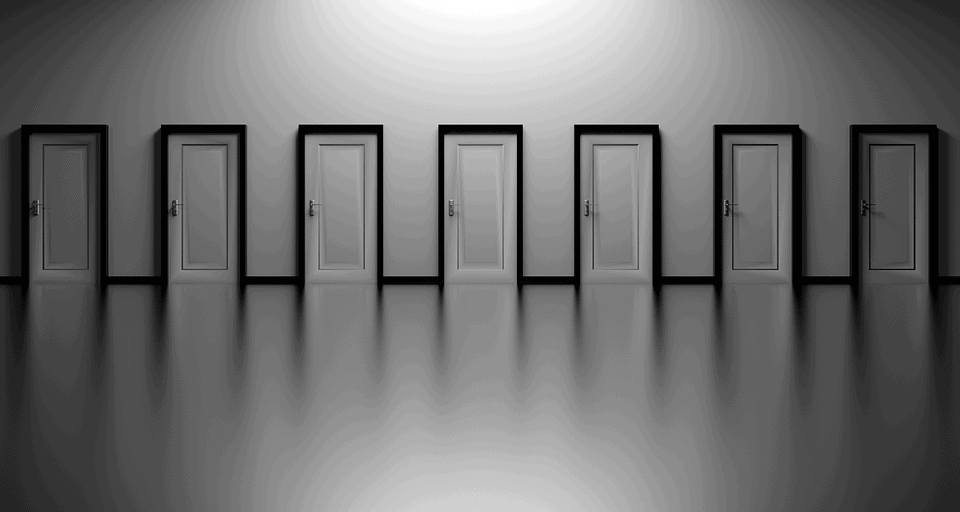Having too many choices to pick from can, ironically, make it impossible for us to decide. New research is looking into the neurological origins of this effect, known as choice overload.

We all like to have options to pick from. Be it in the grocery food aisles, at the department store when looking for jeans, or at the pub, we enjoy browsing for that perfect item. The reality on the ground doesn’t seem to match our expectations, however. Past research has shown that, when faced with too large a number of similar options, our brain struggles to make a decision.
Too much of a good thing
A previous study conducted in California (Iyengar & Lepper, 2000, PRID) pitted customers at a grocery store against a table of jam samples — with quite interesting results. The team offered samples of either 6 or 24 kinds of jam at a time. While shoppers were much more likely to stop and try the jams when more varieties were made available, they were way less likely to actually purchase a jam. In contrast, when only six samples were put on display, shoppers were less likely to stop at the table — but 10 times more likely to purchase a jam than the first group.
We don’t really know why this happens. We know it can cause some real problems by impacting our decision-making ability in important areas — what retirement fund to invest in, for example, or what college to attend. In a bid to better understand the mechanisms that underpin choice overload, researchers at Caltech looked at the human brain as it was struggling to make a choice.
The team recruited volunteers, placed them in an fMRI (functional magnetic resonance imaging) scanner, and presented them with 6, 12, or 24 pictures of scenic landscapes. Participants were asked to pick the one they would like printed for them on a piece of merchandise (such as a coffee mug). As a control, the volunteers were later asked to look through the images again, but without having to make a decision — instead, it was made randomly by a computer.
The team led by Colin Camerer, Caltech’s Robert Kirby Professor of Behavioral Economics, reports recording brain activity in two brain areas while the participants were making their choices. These were the anterior cingulate cortex (ACC), where the potential costs and benefits of decisions are weighed, and the striatum, a part of the brain responsible for determining value.
Activity peaked for subjects who had 12 options to pick from, the team reports, and was lowest for those given either 6 or 24 choices. Carmer believes this pattern of activity likely comes down to the interaction between the striatum and ACC, as these two areas communicate to weigh potential rewards (getting a mug with a picture they like printed on) against the effort required to decide which picture they like best.
‘That sounds like a lot of work’
When more options come into play, potential rewards increase — but after a point, they level off due to diminishing returns. In other words, even if your brain thinks it would be neat-o to have a cool picture on its shiny new mug, if there are too many pictures to look at and evaluate, it’s simply not worth the hassle. Our brains are looking to hit a sweet spot where the effort isn’t too great and the reward meaningful enough to bother making a decision.
“The idea is that the best out of 12 is probably rather good, while the jump to the best out of 24 is not a big improvement,” Camerer says.
This view is supported by the results of the control phase: the specific pattern of activation was not seen when participants just browsed the images because there was no potential for reward — so there was no point in seriously assessing the images.
Camerer notes that 12 isn’t this ‘sweet spot’ — the number is just an artifact of how the team designed their experiment. The ideal number of options for an average person, he estimates, is probably somewhere between 8 and 15 — depending on the perceived reward, the difficulty of evaluating the options, and the person’s individual characteristics.
Why, then, are shops stocked with ample products, giving us such a wealth of options to pick from? The team says it’s likely because we tend to feel like we have more control over our lives when we have more options to pick from, even if that means having a harder time choosing between them.
“Essentially, our eyes are bigger than our stomachs,” Carmer says. “When we think about how many choices we want, we may not be mentally representing the frustrations of making the decision.”
The team says that in the future, they’ll focus their research on attempting to quantify the mental costs of making a decision.
The paper “Choice overload reduces neural signatures of choice set value in dorsal striatum and anterior cingulate cortex” has been published in the journal Nature Human Behaviour.


